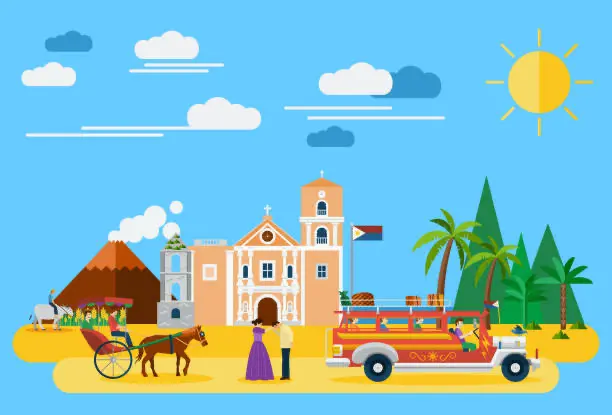Hi everyone! Today I want to talk about the history of the Philippines, a fascinating country in Southeast Asia with a rich and diverse heritage. The Philippines has a long and complex history that spans from prehistoric times to the present day. Here are some of the highlights of this amazing story.
The first humans to inhabit the Philippines were the Negritos, who arrived from mainland Asia around 30,000 years ago. They were followed by waves of Austronesian migrants who brought with them their languages, cultures, and technologies. These migrants formed various settlements or polities across the archipelago, some of which developed into complex societies with trade, agriculture, and political organisation. Some of these polities were influenced by foreign cultures such as India, China, and Islam, which arrived through trade or conquest.
The first European contact with the Philippines was in 1521, when Ferdinand Magellan landed on Homonhon Island and claimed the islands for Spain. Magellan was killed in a battle with Lapulapu, a local chief, on Mactan Island. The Spanish colonisation of the Philippines began in earnest in 1565, when Miguel Lopez de Legazpi established a settlement in Cebu. The Spanish colonisers brought with them Christianity, law, education, and administration. They also faced resistance from some of the native groups, especially the Muslims in Mindanao and Sulu, who fought against Spanish rule for centuries.
The Philippines became part of the Spanish Empire until 1898, when it was ceded to the United States after the Spanish-American War. The Filipinos, who had been fighting for independence from Spain since 1896, did not accept American sovereignty and continued their struggle in the Philippine-American War. The war ended in 1902 with the establishment of an American civil government in the Philippines. The Americans introduced reforms such as public education, infrastructure, health care, and democracy. They also granted limited self-government to the Filipinos through the Philippine Commonwealth in 1935.
The Philippines was invaded by Japan during World War II and suffered greatly under Japanese occupation. The Filipinos fought alongside the Americans against the Japanese until their liberation in 1945. The Philippines finally achieved full independence from the United States on July 4, 1946. The new republic faced many challenges such as poverty, corruption, insurgency, and dictatorship. The Marcos regime (1965-1986) was marked by martial law, human rights violations, and economic decline. It was overthrown by a peaceful people power revolution that restored democracy and ushered in a new constitution.
The Philippines today is a vibrant and diverse nation that is proud of its history and culture. It is one of the largest and most populous countries in Southeast Asia, with over 100 million people and more than 170 languages. It is also one of the fastest-growing economies in the region, with a dynamic and resilient society that has overcome many hardships and crises. The Philippines is a land of contrasts and contradictions, of beauty and tragedy, of hope and despair. It is a land that has much to offer to the world and to itself.
I hope you enjoyed this brief overview of the history of the Philippines. If you want to learn more about this fascinating country, I recommend you check out these sources:
- History of the Philippines – Wikipedia
- History of Philippines | Britannica
- The Philippines: Facts and History – ThoughtCo
- History of the Philippines (1565–1898) – Wikipedia
- Philippines | History, Map, Flag, Population, Capital & Facts
Thank you for reading! Please leave your comments below and share this post with your friends. Stay tuned for more posts on Philippines history and culture!


Leave a Reply